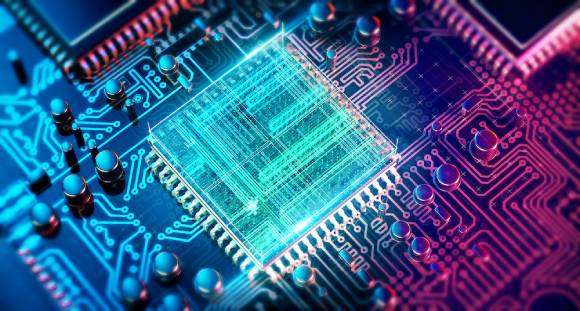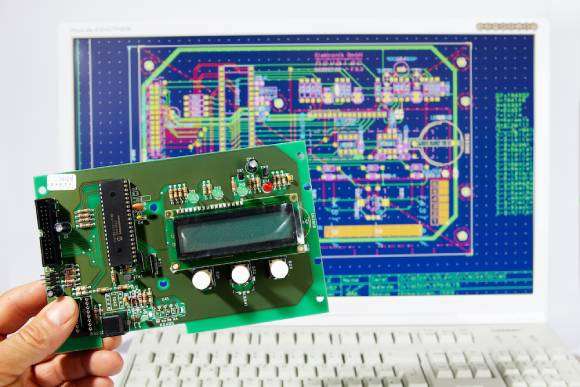

You may be wondering, what is electronic design automation? In the simplest terms, electronic design automation (EDA) is a process that helps designers create and test electronic circuits. It can be used for a variety of tasks, including schematic capture, simulation, prototyping, and PCB layout.
In this blog post, we will discuss in more detail what EDA is and how it works. We will also take a look at some of the benefits that it offers businesses as well as what its future might hold.
What is Electronic Design Automation?
Electronic design automation or EDA is the category of software tools used by engineers to design and test electronic systems such as integrated circuits and printed circuit boards. EDA tools are used to create the physical layout of an electronic device by specifying the position of each component on the chip or board.
EDA tools are used throughout the design process, from creating the initial schematic diagram of a circuit, to simulating its behaviour, to verifying that it meets all the necessary design requirements. In recent years, EDA tools have become increasingly powerful and sophisticated, due to the ever-growing complexity of electronic devices.
Designers now rely heavily on EDA tools to help them verify the correctness of their designs and meet manufacturing deadlines. Without EDA tools, it would be virtually impossible to create today’s complex electronic devices in a timely and cost-effective manner.
EDA tools play a vital role in today’s modern world by helping designers create accurate and reliable designs for electronic devices. With EDA tools, designers can verify the correctness of their designs, catch errors early on and meet manufacturing deadlines. If you’re interested in designing electronic devices, then learning how to use EDA tools is essential.
How Does Electronic Design Automation Work?
If you’re an engineer, then you’re probably familiar with electronic design automation. But for those who aren’t in the field, EDA may seem like a bit of a mystery. So, how does it work? Let’s take a closer look.
Broadly speaking, EDA software aids engineers in the design, analysis, and optimisation of circuit elements and systems. By automating certain tasks, such as repetitive calculations or the placement and routing of components, EDA tools help engineers save time and increase accuracy. There are many different types of EDA tools available on the market, each of which is designed to tackle a specific stage of the design process.
The three main stages are:
- Component/system level design
- Circuit level design
- Layout level design
Component/system level design is where engineers decide on the overall architecture of their circuit or system. This includes defining the functionality and interfaces of each component as well as how those components will interact with one another.
Circuit level design is where engineers go into more detail about each individual component. This includes specifying the values of resistors, capacitors, inductors, etc as well as designing the circuitry that will connect those components.
Layout level design is where engineers take all of the information from the previous two stages and translate it into a physical layout. This is usually done by using electronic computer aided design (CAD) software to create a 2D or 3D representation of the circuit board.
Once all three stages are complete, the final step is to verify that the circuit behaves as expected by running simulations using EDA simulation tools. These simulations allow engineers to test their designs under a variety of conditions to ensure that they meet all specifications.
Electronic design automation is a field that has drastically increased efficiency in engineering projects, both large and small. By automating various tasks throughout each stage in design, from simple repetitive calculations to more complex processes such as placing and routing components, EDA provides valuable assistance that improves accuracy and timeliness in projects.
The Basics of EDA

Electronic design automation is a field of computer science that deals with the creation of software tools to help engineers design electronic systems. These tools automate various tasks in the process of electronic design, such as circuit simulation, chip design/layout, and circuit verification.
Electronic design automation tools are used by engineers to create designs for integrated circuits (ICs), printed circuit boards (PCBs), and field-programmable gate arrays (FPGAs). They are also used to create system-on-a-chip (SoC) designs and embedded system designs. In short, if it’s an electronic device, it was likely designed using electronic design automation tools.
If you’re new to EDA, you may be surprised by the sheer number of electronic design automation software packages and tools. However the most common electronic design automation tools can be roughly divided into three categories:
- Design entry: These are used to create the schematics or HDL code that describes the design
- Simulation: These are used to verify the functionality of the design
- Physical design: These are used to transform the logical design into a physical layout
Some popular electronic design automation software
OrCAD – Offers comprehensive solutions for PCB design, including schematic entry, board layout, constraints management, signal integrity analysis and more.
Cadence Virtuoso – A suite of tools for IC packaging, place and route, analogue/mixed-signal simulation, digital simulations, sign-off verification and more.
Mentor Graphics PADS – A suite of tools for PCB design, including schematic capture, library management, constraint definition and management, data visualisation and analysis and more.
Vivado Design Suite – A suite of design tools for FPGA development from Xilinx that includes logic synthesis, HDL simulators , place and route , IP integrator , MICROWIND sign-off verification and timing analysis, among other features.
How Electronic Design Automation Can Benefit Your Business
When it comes to designing and manufacturing electronic products, businesses have a few different options. They can choose to do everything manually, they can invest in computer-aided design (CAD) software, they can go one step further and invest in electronic design automation (EDA) software, or they can outsource electronic design. So, what’s the difference between these options? Let’s take a closer look.
The difference between manual design, CAD and EDA
Manual design is exactly what it sounds like—product designers create everything by hand without the help of any software or computers. This was the standard method for designing and building electronics until the late 20th century. While it’s possible to create high-quality products using manual design methods, it’s often very time consuming and expensive.
CAD software is computer-aided design software that helps product designers create 2D and 3D models of their products. CAD software is often used in conjunction with manual design methods, but it can also be used on its own. Generally speaking, products that are designed using CAD software are easier and less expensive to produce than those that are designed entirely by hand.
EDA software takes things one step further by automating many of the tasks involved in product design. In addition to helping product designers create models of their products, EDA software can also help with tasks such as managing component libraries, simulating electrical circuits, and generating manufacturing documentation. Because EDA automates many of the tasks involved in product design, it can help businesses save a significant amount of time and money.
Why outsource?
While your business could invest in EDA software and hire/train employees to do the job, there are several good reasons to outsource electronic design automation:
- Core competency focus – outsourcing EDA enables your own engineers to focus on the company’s core competency, not experience a painful and expensive learning curve to understand a new and unfamiliar technology.
- Reduced cost – individual tasks or projects can be outsourced at a much lower cost and with much less risk than temporarily hiring a contractor, permanently hiring a new employee or training your existing employees.
- Increased resource – when resource is limited, outsourced and internal resource can work together, improving throughput and allowing cross fertilisation of competencies and expertise.
- Increased industry knowledge – utilising EDA specialists from outside your own industry brings experience of new materials, best-practises and ground-breaking technologies.
The Future of Electronic Design Automation

The field of electronic design automation is always evolving. What’s hot today may be old news tomorrow. That’s why it’s important to stay on top of the latest trends so you can stay ahead of the curve.
Here are some important trends in electronic design automation that you might need to know about:
- Machine learning for design optimisation
- Cloud-based tools
- Integrating analogue and digital designs
- Low-power/energy-efficient design methodologies
- Saving time with automated testbenches
Machine learning for design optimisation
In recent years, machine learning has been applied to many different areas of electronic design with promising results. Machine learning can be used to optimise a design for various performance metrics, such as power consumption, speed and area. This is a trend that is sure to continue in the years to come as designers look for ways to get more out of their designs with less effort.
Cloud-based tools
The cloud has been a game-changer for many industries and electronic design is no exception. Cloud-based electronic design automation tools offer many advantages over traditional desktop-based tools, such as lower costs, easier collaboration and better scalability. This trend is only going to continue as more and more designers flock to the cloud.
Integrating analogue and digital designs
In the past, analogue and digital designs were created separately and then integrated at the last minute before fabrication. However, this approach is no longer feasible in today’s fast-paced world, where time-to-market is critical. Designers are now integrating analogue and digital designs from the beginning to create a more efficient workflow and avoid potential problems down the road.
Low-power/energy-efficient design methodologies
Power consumption is a major concern for today’s designers due to the ever-increasing demand for mobile devices that can operate for long periods of time without being plugged in. As a result, low-power/energy-efficient design methodologies have become increasingly popular in recent years. These methods help designers meet the stringent power requirements of today’s devices while still maintaining performance levels that consumers demand.
Saving time with automated testbenches
In order to stay competitive, designers need to be able to get their products to market as quickly as possible without sacrificing quality or performance levels. One way to achieve this goal is by using automated testbenches to verify the functionality of a design before it goes into production. By using automated testbenches, designers can save valuable time that would otherwise be spent manually testing their designs – time that can be better spent on other tasks such as optimisation or designing the next generation of products.
The field of electronic design automation is constantly evolving, which means that what’s considered cutting edge today may be old news by tomorrow. However, by staying on top of the latest trends, you can stay ahead of the curve and keep your designs running smoothly, no matter what changes come your way.
The easiest way to ensure that you get the most out of electronic design automation and keep up to date with emerging trends, is to outsource it to experts in EDA. Why not get in touch with us at DSL today to discuss how we can help your business?

